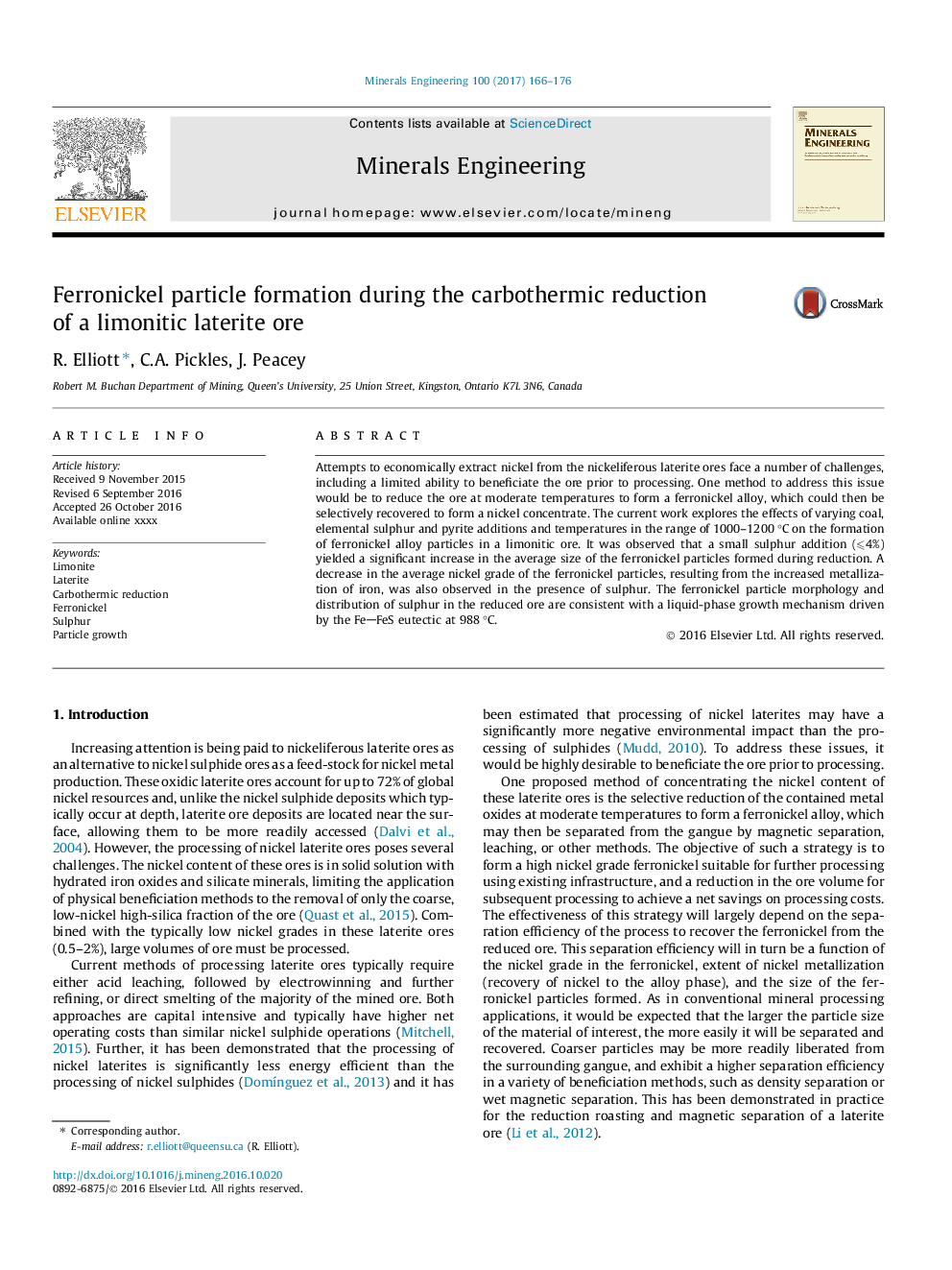| Article ID | Journal | Published Year | Pages | File Type |
|---|---|---|---|---|
| 4910292 | Minerals Engineering | 2017 | 11 Pages |
Abstract
Attempts to economically extract nickel from the nickeliferous laterite ores face a number of challenges, including a limited ability to beneficiate the ore prior to processing. One method to address this issue would be to reduce the ore at moderate temperatures to form a ferronickel alloy, which could then be selectively recovered to form a nickel concentrate. The current work explores the effects of varying coal, elemental sulphur and pyrite additions and temperatures in the range of 1000-1200 °C on the formation of ferronickel alloy particles in a limonitic ore. It was observed that a small sulphur addition (⩽4%) yielded a significant increase in the average size of the ferronickel particles formed during reduction. A decrease in the average nickel grade of the ferronickel particles, resulting from the increased metallization of iron, was also observed in the presence of sulphur. The ferronickel particle morphology and distribution of sulphur in the reduced ore are consistent with a liquid-phase growth mechanism driven by the FeFeS eutectic at 988 °C.
Related Topics
Physical Sciences and Engineering
Chemical Engineering
Chemical Engineering (General)
Authors
R. Elliott, C.A. Pickles, J. Peacey,
